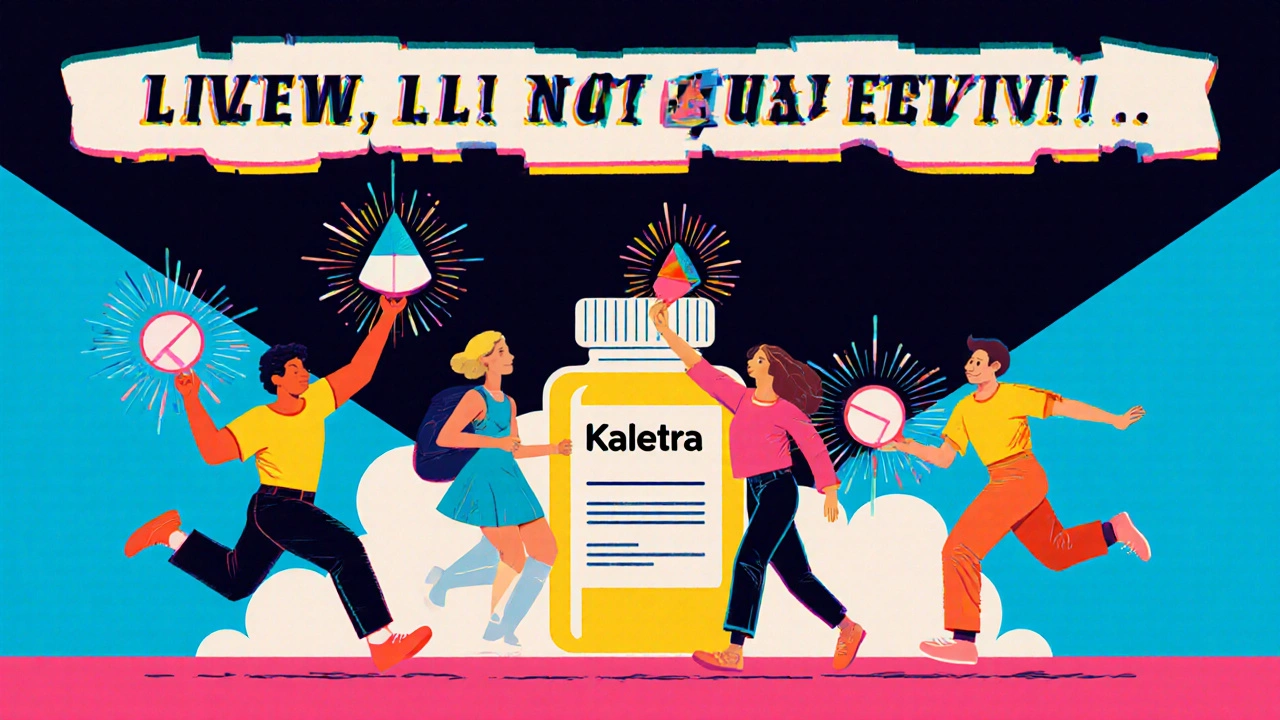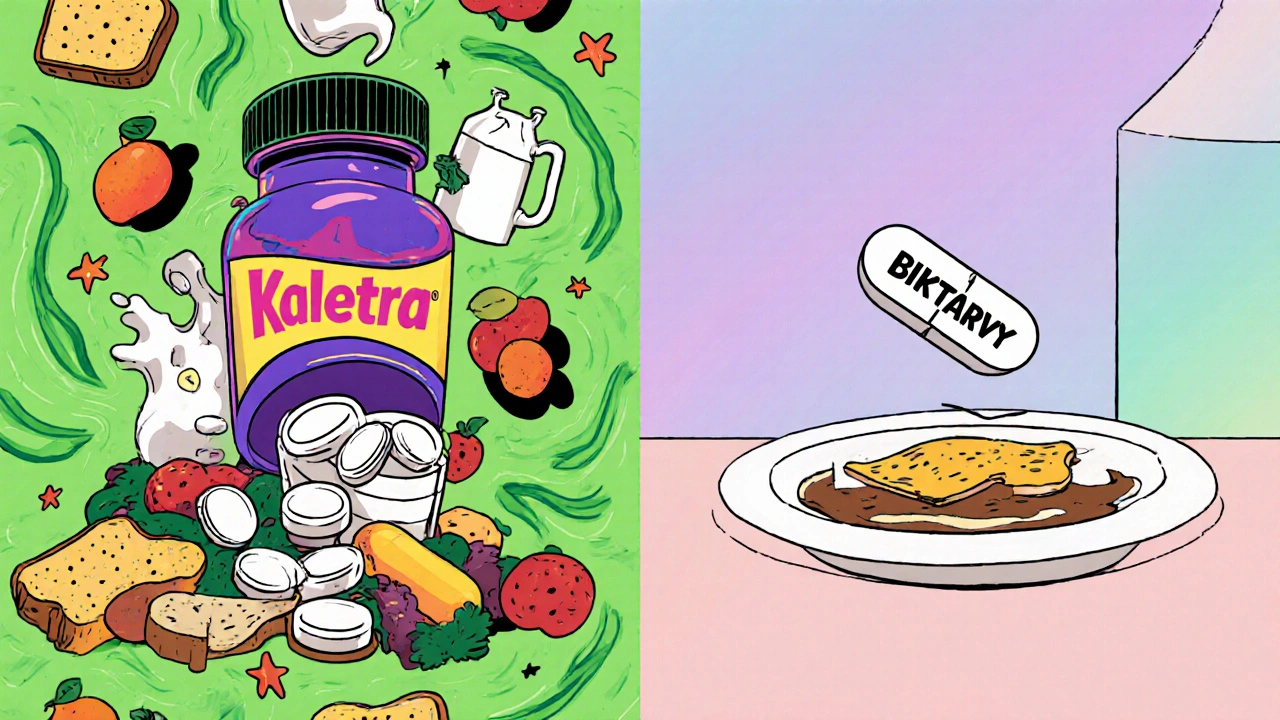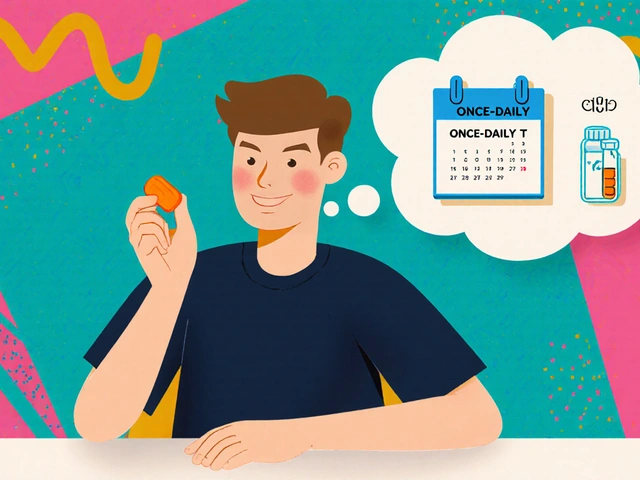HIV Treatment Comparison Tool
This tool helps you compare Kaletra with modern HIV treatment options based on your current experience and needs. It's designed to help you start a conversation with your doctor about whether switching to a newer regimen might be right for you.
Your Current HIV Treatment Experience
When HIV was first treated with drugs like Kaletra - a combo of ritonavir and lopinavir - it was a game changer. Back in the early 2000s, people on Kaletra saw viral loads drop and CD4 counts climb. But today? Things have changed. You don’t have to take six pills a day, deal with nausea, or worry about food restrictions just to keep HIV under control. Modern treatments are simpler, safer, and far more tolerable. So if you’re still on Kaletra, or someone you care about is, it’s worth asking: are there better options now?
What Kaletra Actually Is
Kaletra is a fixed-dose combo tablet containing two drugs: lopinavir and a protease inhibitor that blocks HIV from copying itself, and ritonavir and a booster that slows down how fast your body breaks down lopinavir. Together, they keep the virus in check. But ritonavir isn’t just along for the ride - it’s the reason lopinavir works at all. Without it, lopinavir would be cleared from your system too quickly to be effective.
Kaletra comes in tablets and liquid form. The standard dose is two tablets twice daily, taken with food. That’s four pills a day, plus the food requirement. It’s not just inconvenient - it’s a barrier. Miss a dose? Risk resistance. Eat the wrong thing? Side effects spike. And those side effects? Diarrhea, vomiting, high cholesterol, and liver stress aren’t rare. In fact, up to 20% of people on Kaletra stop taking it because of them.
Why Kaletra Isn’t First-Line Anymore
In 2019, the World Health Organization stopped recommending Kaletra as a first-choice treatment for adults. Why? Because newer drugs do the same job - better.
Modern antiretrovirals like dolutegravir, bictegravir, and rilpivirine work faster, with fewer pills, and almost no food restrictions. They’re also less likely to cause long-term damage to your liver, kidneys, or heart. A 2023 study in The Lancet HIV followed over 5,000 people on different regimens. Those on integrase inhibitors like dolutegravir had 40% fewer treatment interruptions due to side effects than those on Kaletra.
Plus, resistance is a bigger problem with Kaletra. If you’ve had prior treatment with older protease inhibitors, or if you’ve missed doses, Kaletra might not work anymore. Newer drugs have higher genetic barriers to resistance. That means even if you slip up once in a while, the virus still can’t escape.
Top Alternatives to Kaletra
Here are the most common and effective replacements today:
- Dolutegravir + Abacavir + Lamivudine (Triumeq): One pill, once a day. No food needed. Fewer side effects. Works for most people, even those with HIV-1. Only exception: if you test positive for the HLA-B*5701 gene, you can’t take abacavir - it can cause a dangerous allergic reaction.
- Bictegravir + Emtricitabine + Tenofovir alafenamide (Biktarvy): Also one pill, once a day. Used in over 80% of new HIV starts in the U.S. and Europe. Low risk of kidney or bone issues. No food restrictions. Works for people with hepatitis B co-infection.
- Elvitegravir + Cobicistat + Emtricitabine + Tenofovir alafenamide (Stribild): Another single-tablet option. Cobicistat is similar to ritonavir as a booster, but it’s cleaner and less likely to raise cholesterol.
- Rilpivirine + Cabotegravir (Long-acting injectables): Not a pill at all. Two shots every two months. No daily pills. Great for people who struggle with adherence. Requires a 30-day oral lead-in to check tolerance.
These alternatives don’t just match Kaletra’s effectiveness - they outperform it. Viral suppression rates above 95% are common. And the side effect profiles? Night and day.

When Kaletra Might Still Make Sense
That doesn’t mean Kaletra is useless. In rare cases, it’s still used:
- If you’ve tried all newer drugs and developed resistance to them
- If you’re pregnant and need a proven protease inhibitor (though dolutegravir is now preferred even here)
- If you’re in a low-resource setting where newer drugs aren’t available
- If you’re switching from an older regimen and your doctor wants to keep things stable
But even in these cases, doctors usually plan to switch you off Kaletra as soon as safer options become accessible.
How to Talk to Your Doctor About Switching
If you’re on Kaletra and feeling frustrated, you’re not alone. Many people stay on it because they’re afraid to change, or they think their doctor won’t listen. But switching is normal - and often life-changing.
Here’s what to say:
- "I’ve been on Kaletra for X years, and I’m having trouble with [side effects, dosing, food rules]."
- "I’ve read about newer options like Biktarvy or Triumeq. Are those something I could switch to?"
- "What tests do I need to check if I’m a good candidate?"
Your doctor will check your viral load, CD4 count, kidney and liver function, and possibly do a resistance test. Most people are eligible for a switch. The process usually takes one appointment - you stop Kaletra and start the new pill the next day.
What Happens When You Switch?
People who switch from Kaletra to modern regimens often report:
- Less stomach upset within days
- No more needing to plan meals around pills
- Improved energy and mood
- Lower cholesterol and triglycerides
- More confidence sticking with treatment
A 2024 survey in Australia of 300 people who switched from Kaletra found that 92% felt better physically and 88% said they were more likely to take their meds consistently after switching.

Cost and Access: Is the New Stuff Affordable?
In Australia, most newer HIV drugs are covered by the Pharmaceutical Benefits Scheme (PBS). That means you pay less than $30 per script - same as Kaletra. In the U.S., generics of dolutegravir and bictegravir are now available, cutting costs by over 70%. Even in countries without universal healthcare, global health programs like PEPFAR and the Global Fund now distribute newer drugs at near-zero cost.
If you’re told the new drugs are "too expensive," ask for a patient assistance program. Most manufacturers offer them. You don’t have to pay full price.
Real-Life Impact: Stories from People Who Switched
Mark, 48, from Perth, was on Kaletra for 12 years. He had constant diarrhea and couldn’t eat out with friends. He switched to Biktarvy in early 2024. "I didn’t realize how much I was holding back until I could eat pizza without planning my meds around it. Now I travel, I work out, I don’t feel like a patient anymore."
Sarah, 34, was pregnant and on Kaletra. Her doctor switched her to dolutegravir after the 2023 guidelines updated. "I was scared. But my baby came out healthy, and my viral load stayed undetectable. I didn’t even need extra blood tests."
What You Should Do Next
If you’re on Kaletra:
- Check your last viral load result. Is it undetectable? Good. That means you’re doing well - now let’s make it easier.
- Write down any side effects you’ve had: nausea, bloating, fatigue, mood changes.
- Ask your doctor: "Is there a simpler, better-tolerated option I could switch to?"
- Request a resistance test if you’ve missed doses or had treatment failures in the past.
- Don’t stop Kaletra on your own. Switching must be planned with your provider.
There’s no reason to keep taking a drug that’s outdated unless you have no other choice. Modern HIV treatment isn’t just effective - it’s designed for real life. You deserve a regimen that fits you, not the other way around.
Is Kaletra still effective for HIV?
Yes, Kaletra can still suppress HIV if taken correctly. But it’s no longer the best choice for most people. Newer drugs work just as well - or better - with fewer side effects and simpler dosing. Most guidelines now recommend switching away from Kaletra unless there’s a specific reason not to.
What are the biggest side effects of Kaletra?
Common side effects include diarrhea, nausea, vomiting, increased cholesterol and triglycerides, and liver stress. Ritonavir, the booster, is especially hard on the digestive system and can cause long-term metabolic changes. These side effects are why many people stop taking it.
Can I switch from Kaletra to a one-pill-a-day regimen?
Yes, most people can. Pills like Biktarvy, Triumeq, and Stribild are single-tablet regimens that replace Kaletra with fewer pills, no food restrictions, and lower side effect risks. Your doctor will check your resistance history and lab results first to make sure the switch is safe.
Are newer HIV drugs more expensive than Kaletra?
In Australia, newer drugs are covered by the PBS and cost the same as Kaletra - under $30 per script. In other countries, generic versions of dolutegravir and bictegravir are now widely available and cost far less than branded Kaletra. Patient assistance programs also help reduce out-of-pocket costs.
What if I’ve been on Kaletra for years and feel fine?
Feeling fine doesn’t mean the drug is ideal. Long-term use of Kaletra can increase your risk of heart disease, fatty liver, and bone thinning - even if you don’t feel symptoms. Switching to a modern regimen can reduce these hidden risks and improve your long-term health. Talk to your doctor about the benefits, not just how you feel today.
If you’re considering a switch, start with a simple conversation. You don’t need to have all the answers - your doctor’s job is to help you find the best option. Modern HIV care isn’t about surviving treatment anymore. It’s about living well with it.


